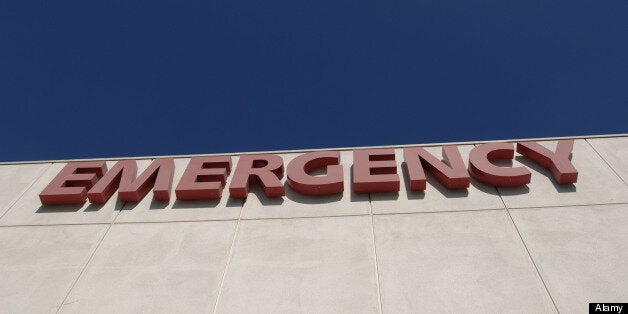
This summer my daughter, Sophie, will graduate from Durham University.
A few days ago 19-year-old Ryan Zon, a winger for Swallownest Miners Welfare Reserves was resuscitated following a heart attack. He was brought back to life by chance for his opponents were a team of doctors.
Three years ago and just weeks before she was due to start her studies Sophie underwent heart surgery in Leeds. She had been diagnosed with Wolff Parkinson White syndrome - one of a number of related cardiac conditions, which usually presents in the teenage years and in which the normal electrical activity of the heart is disrupted.
We were lucky. Very lucky. For just like Ryan her condition was diagnosed by chance.
Last year the organisation CRY - Cardiac Risk in the Young - which undertakes tremendous work in raising awareness of conditions that can lead to young sudden cardiac death screened 12,000 young people between the ages of 14 and 35. Of those, 40 young people who were considered "fit and healthy" were diagnosed with a cardiac condition that was potentially life threatening. A further 120 were diagnosed with a cardiac condition that may not have been immediately life threatening but can now be monitored to avoid major complications later in life.*
They are the lucky ones too.
Yet like many, Sophie was not part of any screening programme - nor are the young people who die suddenly each week in the UK of previously undetected heart problems and which current figures suggest to be at least 12.
In our case Sophie's condition was detected by a vigilant anaesthetist who raised the alarm immediately after she underwent a relatively minor operation for the removal of a skin lesion.
The first symptoms presented when Sophie was 16 and she fainted at school after exercise. The GP said she had very low blood pressure and that was the reason for the fainting. She was also having palpitations but that was put down to exam stress as were her chest pains. Yet many with heart conditions don't have symptoms and conditions aren't identified until after a tragedy.
I shall never forget the look on the anaesthetist's face when he explained the gravity of the situation. For us it was a time of shock and bewilderment. Sophie had gone into hospital for the removal of a skin lesion and been diagnosed with a heart condition. She was immediately referred to a consultant cardiologist who undertook further tests.
Within a fortnight and under local anaesthetic Sophie underwent a cardiac ablation procedure. Despite the risks of the operation and following just one night in high dependency, she left hospital and was discharged from the consultant's care just a fortnight later. In short, within a month Sophie was diagnosed, underwent an operation and is now considered to be cured.
We shall always be grateful to her consultant Dr Lee Graham and his team at Leeds for their care.
But while we consider ourselves to be fortunate we are all too acutely aware that so many other lives could easily be saved if a full screening programme were introduced for all young people as it is in Italy.
The basic test for heart conditions is an electrocardiogram which examines the electrical activity within the heart. The ECG printout is then reviewed by a doctor in conjunction with a personal and family history questionnaire. If a more detailed image is needed an echocardiogram can be taken - similar to an ultrasound scan. And that's it. Yes it places demands on resources but it will save lives.
Arguments against the testing largely centre on the costs of administering a screening programme set against the percentage risk, and causing unnecessary alarm in students who might have an abnormality which is not life threatening.
So this summer will be one of pride and joy for us - but at the graduation my thoughts will never be far from the many parents who have been denied the opportunity to see their children step out into an exciting new world as young, healthy adults and we hope that by sharing Sophie's experience we may have helped others.

Sophie, right, treated successfully for Wolff Parkinson White syndrome.
While many affected do not present with symptoms these are some to look out for:
• Fainting - often during or after exercise, or at times of excitement or distress, and black outs
• Dizziness or lightheadedness often during or after exercise
• Chest pain or discomfort
• Racing heartbeat or irregular heartbeats
• Family history of heart disease
• Family history of sudden cardiac death
• Shortness of breath, fatigue and tiredness
More information about the work of CRY can be found at www.c-r-y.org.uk Tel. 01737 363222
*information taken from Cardiac Risk in the Young September to December 2012.